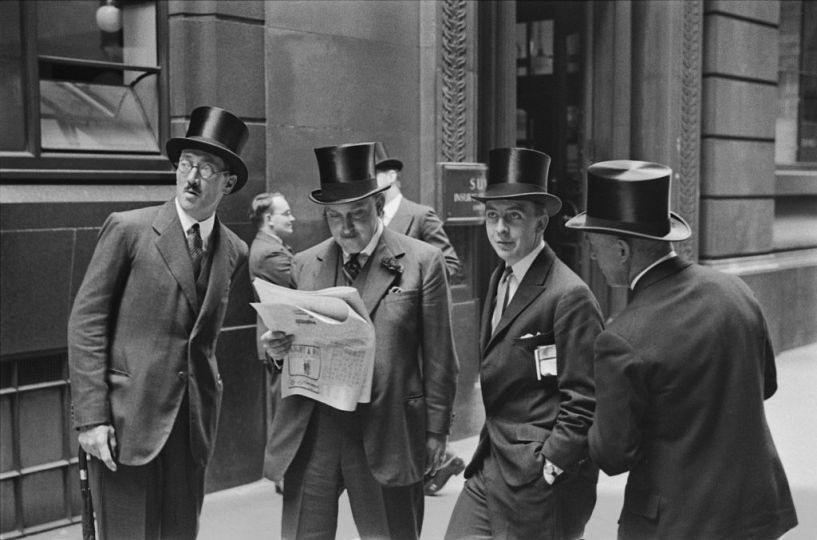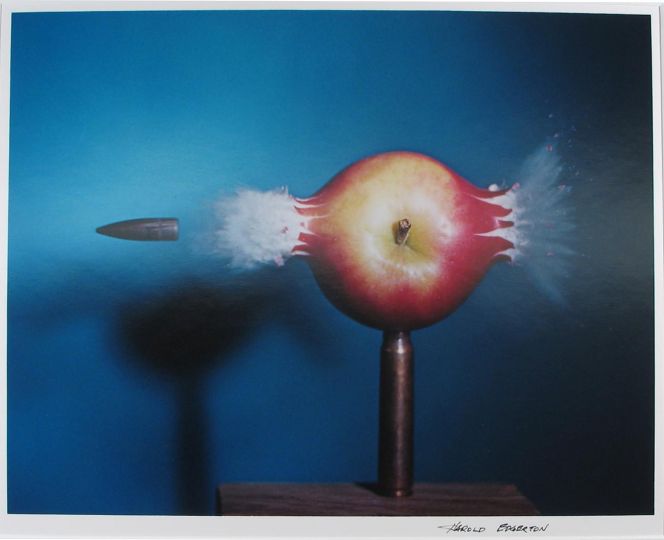The first major exhibition in over 30 years dedicated to the photographer E.O.Hoppé has opened at the National Portrait Gallery. Hoppé (1878-1972) was one of the most important photographers of the first half of the twentieth century and much of his work has only recently been reassembled. Hoppé Portraits: Society, Studio and Street brings together for the first time his strikingly modernist portraits alongside his fascinating documentary studies capturing the realities of day-to-day life in Britain between the wars.
E.O. Hoppé was the prototypical celebrity photographer, and his success in the 1910s and 1920s can be compared to that of Richard Avedon or Irving Penn in the late twentieth century. By 1913 his third photographic studio occupied the 27-room Kensington House of the late Sir John Everett Millais and was a magnet for the rich and famous. The first section of the exhibition will feature over 80 portraits of celebrities taken in this period, including Margot Fonteyn, George Bernard Shaw, H.M King George V, Vaslav Nijinsky, Ezra Pound, David Lloyd George, and Benito Mussolini. Hoppé wrote of his career as a portraitist: ‘The personality of living people, dual and often multi-fold, is always more absorbing than that portrayed on canvas, and I have been lucky in that my calling as a portraitist has enabled me to peek behind the facades, as it were, of so many great and interesting men and women.’
In 1922 Hoppé published the Book of Fair Women, a compilation of photographs of the women he considered to be the most beautiful on earth. Notable for its multicultural approach, Hoppé selected 32 representative beauties from 24 different countries and a selection of these portraits will also be on display. Securing his reputation as a connoisseur of the female form, the publication caused controversy by raising philosophical questions about human aesthetics. This book, and, in the same year, his largest ever solo exhibition with 221 prints at the Goupil Gallery, marked a turning point in Hoppé’s career.
Fascinated by questions of race and social mobility, Hoppé compiled a collection of studio portraits examining different ‘types’ of people. Hoppé said of these portraits: ‘I had it in my mind to make a record of the various distinctive types which one used to see in London streets but which were rapidly vanishing as the result of changing conditions. I started on this pictorial chronicle by approaching any interesting “character”.’ These portraits, shot against a neutral background and illuminated from above, were cropped to the head or bust removing details of any clothing. The lighting had an ennobling effect on the appearance of the sitters whilst at the same time subsuming their personalities and reducing them to ‘types’. A selection of these portraits including a postman, flower lady, and a ‘highly respectable type’, are an important section of the exhibition.
In the 1920’s and 1930’s Hoppé increasingly left the studio to make photographs of British street life and captured those at the other end of the social spectrum to his celebrity sitters. These pictures, sometimes taken with a hidden camera, explored ideas about class and typology. More than 50 of these studies from Hoppé’s exploration of the English are on display. These photographs include the homeless, bell ringers, behind the scenes at Sandhurst Military Academy, a dog hospital, night watchmen, a girl’s borstal institute, a skeleton shop, portraits of ‘pearlies’, street musicians and the tattoo artist George Burchett. Immersing himself in London’s growing immigrant communities, Hoppé’s photographs create a collective portrait of the nation at this time, with one foot firmly in the past and another reaching toward the future.
Emil Otto Hoppé, was born in Munich in 1878 and was persuaded to follow the family profession of banking for which he had little interest. On his way to Shanghai to head an Export Merchant firm he decided to stay in London and was found a job at Deutsche Bank. After meeting the photographer J.C. Warburg he purchased his first camera, and shortly afterwards he was elected a member of the Royal Photographic Society (RPS) before being awarded a Fellowship by the society in 1907. His work was widely published and exhibited during his lifetime, and in 1937 he used his archive of photographs to form the Dorien Leigh photographic agency. This agency served as an outlet not only for his own work, but also for that of other photographers, and was organised by subject rather than photographer. Ironically, this led to the decline in Hoppé’s reputation as his images were absorbed into the archive and were difficult to appreciate as a distinct group, especially when the even bigger Mansell Collection purchased the archives. In 1994 Graham Howe of Curatorial Assistance began the long task of extracting, cataloguing and conserving Hoppé’s work into an official archive from which this exhibition is drawn alongside the Collection at the National Portrait Gallery.
The exhibition is curated by Phillip Prodger, Curator of Photography at the Peabody Essex Museum, Salem.
PUBLICATION
A fully illustrated hardback catalogue showcasing 150 of Hoppé’s remarkable portraits accompanies the exhibition and explores new research into his life and work by curator Phillip Prodger, with an additional essay by Terence Pepper, Curator of Photographs at the National Portrait Gallery. RRP £30
Until 30 May
Wolfson Gallery
National Portrait Gallery
St Martin’s Place
WC2H 0HE London

















